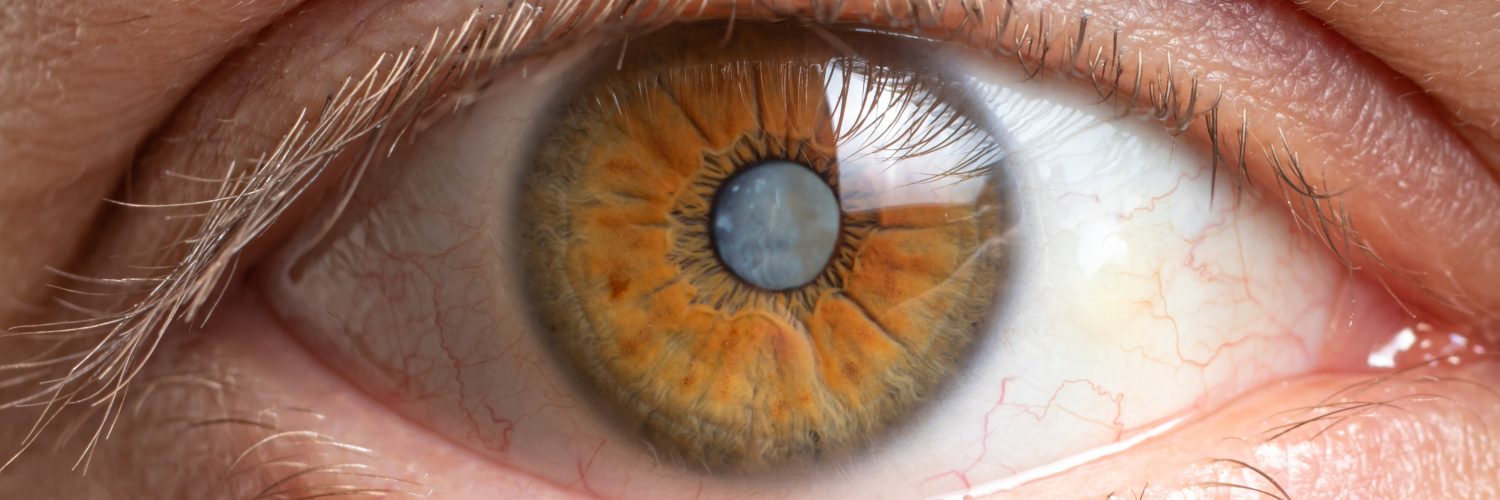
What are cataracts?
In order for you to be able to see, light passes through the clear lens in your eye. The purpose of this lens, which is situated behind the iris, is to focus the light onto the retina at the back of your eye so your brain and your eye can work together to process information that allows you to see. Over time, and more particularly as you age, this lens becomes cloudy and can harden thereby affecting the amount of light that can pass through the lens and your ability to see. This is known as a cataract and it can occur in one or both of your eyes.
Who can get cataracts?
Cataracts usually form as part of the aging process, although it is often not until you are in your 70s and 80s that they become a problem. You may be more susceptible if you have inherited a tendency towards getting them from others in your family. However, aging is not the only reason you can get cataracts. Younger people are also at risk of getting cataracts:
- as a complication for those who suffer from diabetes
- from eye trauma or some types of eye surgery
- from X-rays or other radiation treatment
- from over exposure to sunlight and damaging ultraviolet rays
- from certain medications such as corticosteroids
- if you are a smoker
- congenital cataracts may be present at birth or appear sometime after during infancy or childhood.
How does a cataract form?
Most cataracts develop slowly, so you may not be aware of them at first. They are caused when the normal proteins and fibres in the lens begin to break down and form into clumps and cloud the lens blocking the light from passing through the lens. Over time your vision will become blurred or cloudy. They generally develop in both eyes, but the progress may vary for each eye. Cataracts may develop faster in younger people. However, it is not possible to predict how quickly they will develop.
What types of cataracts are there?
Some types of cataracts are:
- Nuclear cataracts. The most common kind of cataract, these form in the centre of the lens. Over time the lens hardens and can turn yellow or brown affecting your ability to distinguish between shades of colour.
- Cortical cataracts. These form on the outside edge of your lens starting as white wedge-shaped streaks that point and grow towards the centre of the eye.
- Posterior Subcapsular cataracts. Forming at the back of the lens, they are directly in the path of the light as it passes through the lens making it hard to see in bright light.
There are other types of cataracts that are not related to age, such as a secondary cataract that forms as a result of eye surgery or as a consequence of diabetes, radiation cataracts triggered by radiation exposure, traumatic cataracts as a result of some eye injuries and congenital cataracts which are present at birth.
What are the symptoms?
Some of the changes you may notice are:
- your vision may be clouded, blurred or dim
- sensitivity to bright light or glare
- double vision in the affected eye
- seeing halos around lights
- difficulty with your vision at night
- colours appearing different, faded or yellow
- frequent changes in your eye prescription and glasses
- needing more light to read and reading becoming difficult.
How are cataracts diagnosed?
Your optometrist or ophthalmologist will undertake several tests during your eye examination.
- Visual acuity test. An eye chart test to check the sharpness of your vision.
- Slit-lamp examination. A special microscope that uses a bright light to check the cornea, the iris and the lens and other areas at the front of the eye.
- Retinal examination. Drops are put in your eye to widen the pupil so that the retina can be checked.
How are cataracts treated?
Eventually your cataracts will need to be surgically removed. However, surgery is not usually undertaken until your loss of vision is causing problems and making life difficult. Before that time eventuates, there are various ways you can manage your symptoms. In the early stages reviewing your eye prescription may be necessary. If you are having trouble reading, brighter lights or a magnifying glass may help. Make sure you wear sunglasses outside to help with glare and, if necessary, avoid driving at night.
When surgery becomes inevitable, your eye surgeon will undertake a procedure that will remove the clouded lens and replace it with a clear artificial lens, known as an intraocular lens, positioned in the same place as your natural lens and shaped to fit your eye. The procedure is undertaken as a day surgery, takes about 30 minutes and is performed under a local anaesthetic.
Is there anything I can do to prevent getting cataracts?
While some risk factors are beyond your control, such as family history, there are some things you can do to prevent or slow down the progression of cataracts. It is important to have a regular eye examination so any changes are found early. When outdoors make sure you are wearing sunglasses and a hat to protect your eyes from ultraviolet radiation. If you are diabetic, try to maintain good control of your blood sugar levels. Maintain a healthy diet with plenty of fruits and vegetables. And if you are a smoker, consider quitting.

